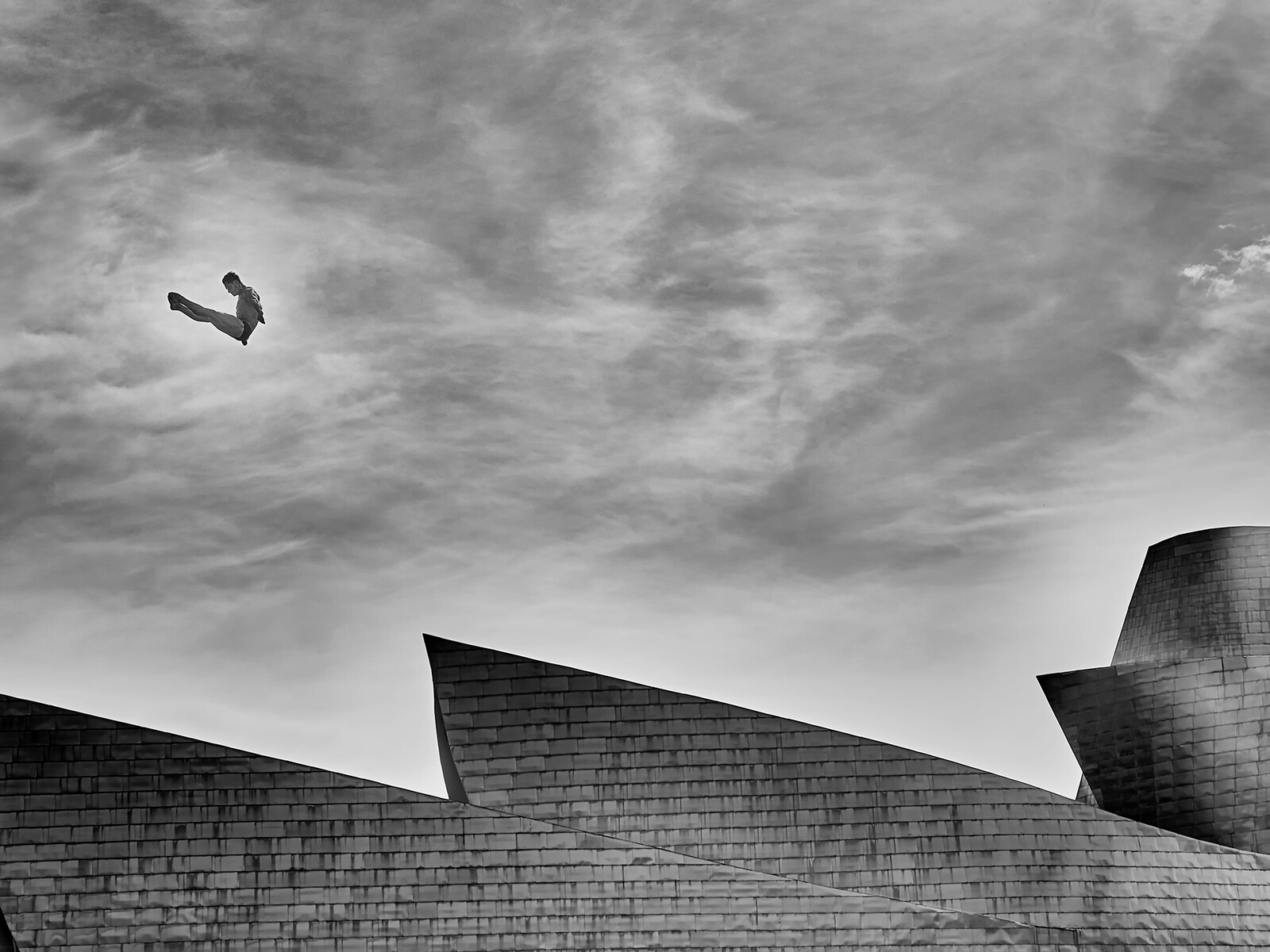
Angel Sánchez

PX3 Prix de la Photographie Paris 2025 – Non-Professional
First Place Winner in Sport – Weightless in the Guggenheim Museum
Could you tell us a bit about yourself and your journey as an artist—how did photography become your language of expression?
I am Ángel J. Sánchez, a photographer from Bilbao specialized in Fine Art, architecture, sports, portraiture, and landscape. But my work does not seek to be confined to a single genre: what truly matters to me is telling stories through photography. Each series I create is a visual narrative that gives meaning to emotions, to the spaces and the time we inhabit, to what moves me, stirs me, and unsettles me. It is always a profoundly personal vision.
Being named Sports Photographer of the Year at Px3 is a remarkable recognition. What does this achievement represent to you, both personally and artistically?
It is an immense honor and an unexpected joy. For me, this award proves that sports photography can also be read as art, as a visual metaphor, and not only as a simple record of action. This recognition encourages me to continue exploring how the human being relates to space, architecture, and movement.
Your winning image, Weightless in the Guggenheim Museum, captures a breathtaking dialogue between movement and architecture. Could you share the story and inspiration behind this photograph and the Weightless series as a whole?
Weightless in the Guggenheim Museum (Bilbao) is part of the series Weightless, more than 20 photographs taken during the successive Red Bull Cliff Diving championships held in Bilbao, my city. The series was born from the desire to capture a suspended instant: the human body floating above the metallic lines of the museum. It is a dialogue between mass and lightness, between architecture, dynamism, and the ephemeral. But it also speaks of the moment of decision, of the attraction of the void, of leaping while overcoming uncertainty.
Your projects often transcend genres, blending emotion, architecture, and space into poetic visual narratives. Could you describe your creative philosophy and how you build meaning within a photographic series?
I conceive photography as an intimate and universal language. I am less interested in documenting what I see than in expressing what I feel. I work in series because they allow me to build a broader narrative: Babel, Weightless or Plastic Seas are different ways of speaking about solitude, memory, belonging, and transcendence.
What guidance would you offer to fellow photographers who wish to move beyond aesthetics and create work that truly speaks to themselves and to others?
To find their own voice, beyond technique or trends. Photography is not only about capturing beautiful images; it is about the possibility of telling stories that make us pause, reflect, and feel.